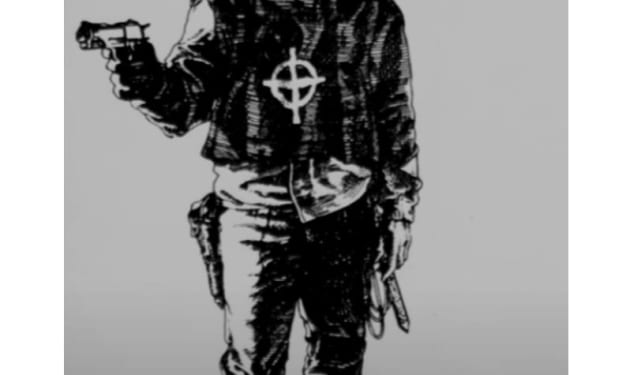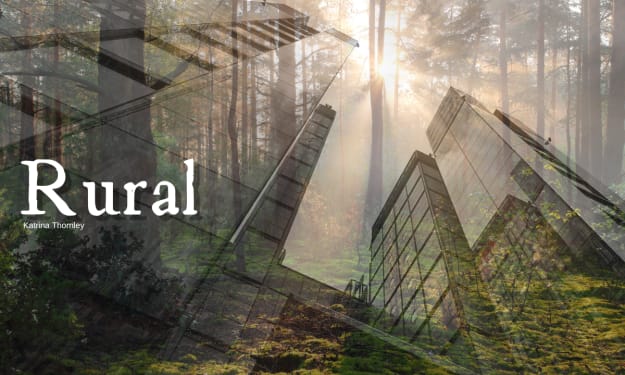The most terrifying places on our planet

On our planet, you can find places so creepy that they can horrify even the most experienced enthusiast. Some of them can chill your blood, while in others, you might easily go insane. So, let me tell you about the scariest places on our planet.
**The Psychiatric Hospital of Barbara in Philadelphia** is known as a hospital with the most tragic fate. Initially built as a small farm, it soon turned into the last refuge for the most hopeless patients expelled from other hospitals. These people had no chance of ever leaving Barbara. It is not surprising that since the mid-20th century, the number of incurably mentally ill people was more than sufficient, and the hospital began to enjoy unprecedented demand. However, with such a number of often extremely aggressive people who committed the most severe crimes, the hospital had no chance of dealing with them using civilized methods. Workers who visited the hospital reported how patients, most of whom were completely naked, clung to each other out of fear and cold, defecated directly on the floor, which did not affect the feelings of the specially selected absolutely heartless staff. These horrors continued year after year. Some patients said they were chained to their beds for months. Others spoke of inhumane tortures for the most violent and rebellious. It got to the point where one person was dismembered and hidden on the hospital grounds, and the killer was never found. Many mentioned frequent ghost sightings on the hospital grounds – the souls of people tortured to death found no peace. It is terrifying to know that despite three decades of reports of terrible staff behavior and horrific unsanitary conditions, the authorities did not make any attempts to change anything. Only in the late 1990s was a thorough investigation conducted, and after the investigators' shocking report, the decision was made to close this terrible place. For many years, the buildings of the psychiatric clinic Barbara remained deserted, becoming a sort of Mecca for Satanists who conducted their ritual ceremonies there.
**Voodoo religion** is incredibly interesting but simultaneously the most mysterious and creepy religion in the world. Voodoo originated and spread mainly in the West African republics. According to historians, Voodoo came from the oldest religion on earth, which appeared with the rise of African civilization. In Lomé, the capital of the African Republic of Togo, there is perhaps one of the creepiest places on the planet where Voodoo adepts from all over the world gather – the Akodessewa Fetish Market, the main magical market on the planet. Hardly anyone will remain indifferent after visiting this place. Numerous rows with frightening goods are located in the open air: bones, skulls, potions, severed heads and limbs of wild animals, and much more. Long wooden counters are filled with heaps of heads, tails, hides, and other unimaginable and terrifying goods. Sorcerers from all over Africa come here to find ingredients for their frightening rituals. But besides the wizards, hundreds of ordinary people wander around the market, looking for solutions to their life problems. Some want to cure diseases, others strive to become stronger and more resilient, and some wish to curse their enemy. Often, the ritual begins right on the spot: the seller makes three deep cuts on his chest or back, while the suffering person rubs himself with a healing powder of dubious nature. After smoking a certain type of mixture, the person embarks on a "trip," losing control over himself and starting to see hallucinations, often seeing their future. The experiences from these substances are so realistic that virtual reality is child's play compared to Voodoo magic potions. However, the consequences of such acts can be very dire, as the term "zombie" is firmly associated with Voodoo practices.
**The Island of the Dead – Gate to Hell** is one of the creepiest and blood-chilling places on the planet. It all began in the 15th century when the plague was rampant in Europe. Cities were filled with corpses that couldn't be buried in time. Rotting bodies spread stench and disease. That's when the belief turned the island into an isolation place for plague victims. To stop the epidemic, not only corpses but also living infected people, including children and women, were brought to the island and left to face their death without any help. They were thrown into pits together with the bodies or burned alive to stop the plague with fire. By the most modest estimates, over 160,000 infected people were killed here. Despite its bad reputation, the island was used again in the 20th century for forced isolation of people. In 1922, a psychiatric hospital for mentally ill people was opened here, where enemies of Mussolini's regime were also sent. The chief doctor was given full carte blanche to conduct the most sophisticated experiments on his patients, using methods that more closely resembled medieval torture. Patients often complained of hearing strange whispers, moans, and cries at night, and some saw people appearing out of nowhere and burning to ashes before their eyes. These events went unnoticed until the hospital staff started seeing and hearing the same things. The chief doctor died two years later, falling from the bell tower under mysterious circumstances. Now, Poveglia Island is closed to tourists, and the area is heavily guarded against unauthorized entry. Those few who managed to bypass the security and enter the island unanimously claimed that real evil lives on Poveglia and strongly advise against trying to get there.
**Capuchin Catacombs in Palermo** under the Santa Maria Cathedral are one of the creepiest places on the planet. Unlike any other catacombs, the entire interior of the Santa Maria Catacombs consists only of mummified and embalmed bodies. For a long time, the catacombs were considered the most elite cemetery where the most worthy and famous people were buried. The tradition of burying people in the catacombs began in the 16th century. The first Capuchin monk was buried there in 1599. It turned out that the special composition of the soil and the atmosphere in the catacombs slowed down the organic processes and stopped the decomposition of bodies. Before burial, the deceased were dried in special chambers for 8 months and then hung or laid along the walls or in special niches. Not only monks but also the most generous benefactors of the monastery were buried in the catacombs. At that time, for any layman, it was a great honor to be buried in the crypt of Santa Maria. Over time, the crypt became too small, and the Capuchins began digging long corridors for the burial of more and more bodies. Although a ban on open burials was introduced in 1837, relatives of the deceased still circumvented this ban in every possible way, leaving windows in coffins that allowed seeing the body. The final ban on such burials was imposed only in 1882. The most terrifying burials in the catacombs are the mummies of children, some of which have been preserved in almost perfect condition for many decades. The catacombs house the ancestors of many now-living famous people of the city, and on the Day of Remembrance of the Dead, the descendants of those whose mummies are on public display descend into the catacombs.
**Pompeii** was destroyed by the eruption of Mount Vesuvius in 79 AD, which killed thousands of people. The city was discovered only in the late 18th century, and the scientists were amazed to find perfectly preserved buildings, household items, food, and frozen corpses. Initially, the strange statues that did not match the classical canon of ancient art puzzled archaeologists. But when one of these statues was accidentally broken and human remains were found inside, everything fell into place. Hundreds of human tragedies were frozen in stone. On one street, a couple was found – a woman, apparently pregnant, and a man trying to shield himself with his hands from falling pumice stones. In one house, a mother with three children was found; the children didn’t even have time to wake up. People huddled together, trying to shield themselves from the ash. Many ran to the pier, and some lucky ones managed to sail away far enough not to burn alive or suffocate in the ash. But the majority of the city's population was doomed. Today, Pompeii is an open-air museum of antiquity. Anyone can visit this creepy monument of world history and see the frozen tragedy of the past with their own eyes.
About the Creator
Enjoyed the story? Support the Creator.
Subscribe for free to receive all their stories in your feed. You could also pledge your support or give them a one-off tip, letting them know you appreciate their work.





Comments
There are no comments for this story
Be the first to respond and start the conversation.